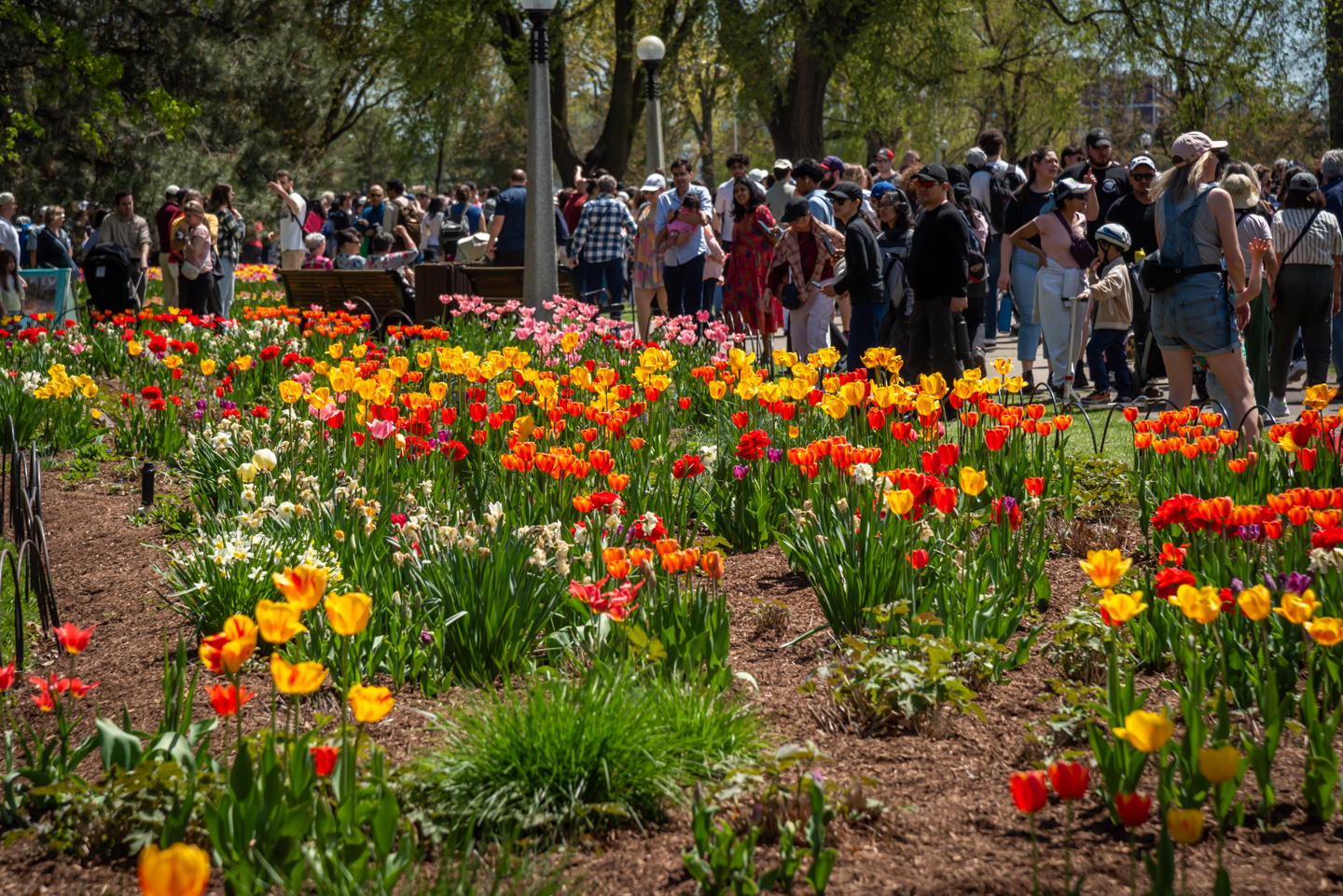This year, the 2025 Tulip Festival celebrated the 80th anniversary since the Liberation of the Netherlands from Nazi Germany occupation in 1945, and rang in the milestone with veterans, drones, fireworks and more than 400,000 visitors.
The Tulip Festival has just wrapped up its 2025 season, which saw an estimated 400,000 visitors over the 11-day festival, says executive director Jo Riding.
“We were celebrating 80 years since the Liberation the Netherlands, so at our opening ceremony, we were so proud to host two Second World War veterans,” she told Ottawa Compass. “We had Honorary Lieutenant General Richard Roemer at the age of 101, and retired Private John priest, who was 99.”
The opening ceremonies were co-hosted with the Canadian Army and honoured veterans with a CF flyover and a cannon salute.
“We were able to host the Governor General of Canada, as well as the Lieutenant Governor of Ontario and the new ambassador from the Kingdom of the Netherlands,” Riding added. “So it was a VIP event, and it was a really great way to honor our service members and our veterans. So that was amazing.”
The festival also offered the Tulip Legacy walking tour, which guided attendees through gardens to interact with stories of veterans, creating a theatrical experience set in 1946.

For example, participants would interact with Pilot Officer Richard Romer, who was born in Hamilton, Ont. and was 18 when he enlisted.
“It was a personal pleasure to be able to put in one of my own family members, led Corporal George Riding, who fought in the Battle of the Scheldt,” Riding explained.
The Battle was a series of military operations to open up the Scheldt river between Antwerp and the North Sea for shipping. Riding’s grandfather was in the Battle of the Leopold Canal, which took place from Sept. 13 to 14 in 1944, in the machine gunners regiment from Montreal.
Approximately 140 soldiers went into the battle, and an estimated six survived.
“Grandpa George was one of them. So after seven years of doing the festival, we thought, let’s share grandpa George’s story for the Liberation 80 celebration,” said Riding. “So that was really nice, and we just try to bring those personal stories.
“It’s one thing to say so many boys lost their lives,” she added. “It’s really different when you look at them as a brother, a father, a son, and then you realize what that does to the families here at home, and that the sacrifice was global. It wasn’t just happening in Europe, it was happening here in Canada.”
Also new to the festival this year was the Big Bug Boardwalk, which included giant fake bees and ladybugs and trees, all lit in LED, and 2,500 tulips lit under UV light with a black light.
“We did that because black light’s fun, but also because that’s how the bees and butterflies see the flowers. The pollen actually glows when you see it in the UV spectrum, so they leave little trails for each other that we never get to see,” explained Riding. “It’s a neat way to literally see the tulips in a whole new light.
“That was a really fun addition this year. I’m planning an even bigger Bug Boardwalk for next year, so we’re gonna keep growing on that work.”
The festival also included the usual food trucks, music, markets and 300,000 tulip blooms.
It can be difficult to monitor attendance for the festival since it is free and non-ticketed. The National Capital Commission uses laser counting sensors to estimate attendance, while Ottawa Tourism monitors hotel data, which only accounts for out-of-town visitors who seek accommodation.
“So far, that data is showing that the first weekend generated slightly more demand vis-a-vis accommodators than the first weekend last year,” Ottawa Tourism told Ottawa Compass in a statement. “It’s worth noting that this data would not capture visitors who stay with friends and relatives—a significant segment that’s harder to quantify but equally important to the festival’s reach.”
Events like the Tulip Festival have a “substantial” effect on the local economy, Ottawa Tourism added, due to “the ripple effect they have across the city, benefitting neighbourhoods far beyond where they’re held.”
“Visitors staying in one area often explore and venture to different neighbourhoods, discovering more of what Ottawa has to offer. It’s a net positive for the whole community.”

